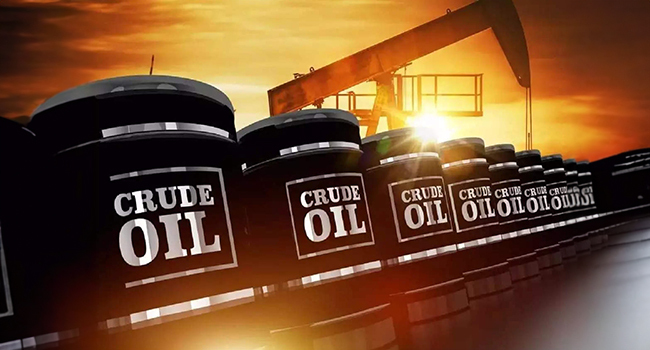Oil prices jumped on Monday, adding to gains of more than 2 per cent from Friday.
Brent crude futures rose 15 cents to $70.51 a barrel by 7:00 AM WAT, extending a 2.51% gain on Friday. U.S. West Texas Intermediate crude futures climbed to $68.59, up 14 cents, after settling 2.82% higher in the previous session.
Last week, Brent rose 3%, while WTI had a weekly gain of around 2.2%, after the International Energy Agency said the global oil market may be tighter than it appears, with demand supported by peak summer refinery runs to meet travel and power generation.
However, ANZ analysts said price gains were limited by data showing Saudi Arabia lifted oil output above its quota under the Organization of the Petroleum Exporting Countries and allies’ supply agreement.
The IEA said Saudi Arabia exceeded its oil output target for June by 430,000 barrels per day to reach 9.8 million bpd, compared with the kingdom’s implied OPEC+ target of 9.37 million bpd.
Saudi Arabia’s energy ministry said on Friday that it had been fully compliant with its voluntary OPEC+ output target, adding that Saudi-marketed crude supply in June was 9.352 million bpd, in line with the agreed quota.
Investors eyed further U.S. sanctions on Russia that may affect global supplies, but a ramp-up in Saudi output and ongoing tariff uncertainty limited gains.
The development comes as U.S. President Donald Trump said on Sunday that he will send Patriot air defence missiles to Ukraine. He is due to make a “major statement” on Russia on Monday.
Trump has expressed frustration with Russian President Vladimir Putin due to the lack of progress in ending the war in Ukraine and Russia’s intensifying bombardment of Ukrainian cities.
In a bid to pressure Moscow into good-faith peace negotiations with Ukraine, a bipartisan U.S. bill that would hit Russia with sanctions gained momentum last week in Congress, but it still awaits support from Trump.
European Union envoys are on the verge of agreeing on an 18th package of sanctions against Russia that would include a lower price cap on Russian oil, Reuters reported, quoting four EU sources after a Sunday meeting.
BP’s second-quarter results are expected to be impacted by lower prices received for gas and oil. While its upstream output is set to be higher than previously forecast.
READ ALSO: ‘Find Lasting Solutions To Niger Delta’s Socio-Economic Difficulties, Okonjo-Iweala Tells NDDC
Elsewhere, China’s June oil imports increased 7.4% to 49.89 million tons from a year earlier, equivalent to 12.14 million barrels per day, reaching the highest daily rate since August 2023, according to customs data released on Monday.
China is likely to continue stockpiling, but with storage at 95% of the peak inventory build from 2020, these inventories are likely to emerge in “visible” Western market locations that are crucial for price formation, exerting downward pressure on prices, J.P. Morgan’s research team said in a client note.
Investors are also eyeing the outcome of U.S. tariff talks with key trading partners that could impact global economic growth and fuel demand.
(Metric ton = 7.3 barrels for crude oil conversion)





